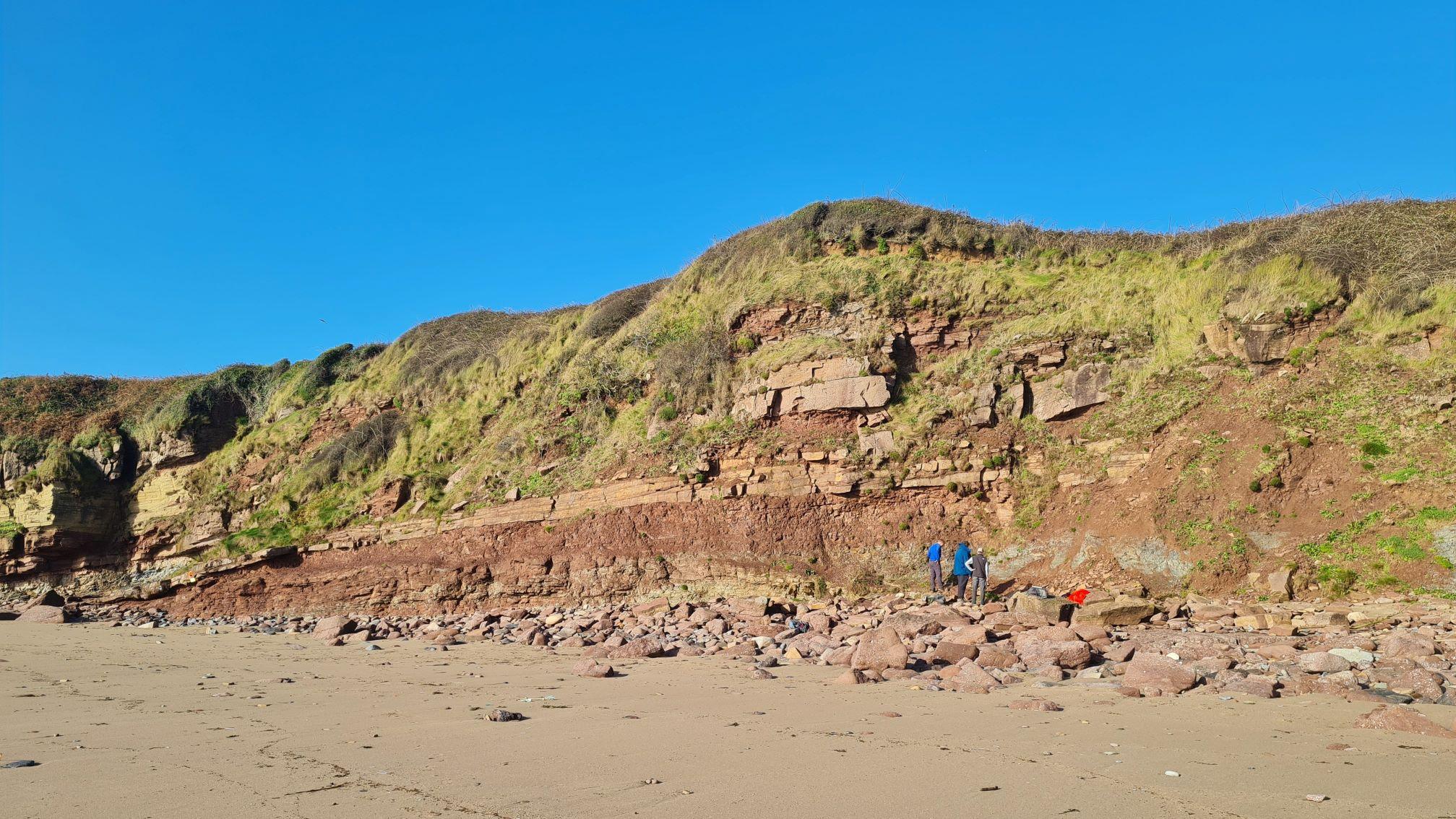
Submitted by Dr C.M. Martin-Jones on Thu, 15/06/2023 - 14:54
Trees were making a clear impact on the landscape as far back as the Late Devonian, around 360 million years ago, according to a new study from Cambridge’s Department of Earth Sciences.
The researchers studied fossil trees preserved at Ireland’s oldest fossil forest site, in County Wexford. The fossilized remains show that trees influenced rivers by diverting their flow and stabilizing channel banks.
Previous fossil evidence suggested that plants started to shape the terrain later, when swampy forests were first established across the tropics.
Plants first colonized land in the Silurian, about 440 million years ago, but it wasn’t until the Middle Devonian (390 million years ago) that these plants started to resemble trees, with tall stems and branching tops. Scientists think that the gradual evolution of plants and trees were key factors in developing our atmosphere, biosphere and oceans.
“We wanted to understand how landscapes evolved alongside plants,” said PhD student Yorick Veenma, who led the research. “The new fossil evidence shows that early trees quickly started altering river systems.”
During the Devonian, large parts of Europe were generally warm and arid, and much of this area was crisscrossed with meandering and braided rivers. The Harrylock Formation in County Wexford, Ireland, provides a snapshot of the landscape at this time. “Fossil trees have been found before at this particular site,” said Veenma. He added, “It's the clues the surrounding rocks contain about ancient landscapes that interest me.”
One of their fossil finds was an ancient log-jam, made up of uprooted trunks laid down in a river channel. By studying the sediments surrounding the fossil remains, they saw that the log-jam shifted the course of the river.
The researchers also found trees preserved upright, as they would have grown, inside an ancient river channel. This shows that the trees had enough time to grow when the channel temporarily dried up, said Veenma. The channel stayed in the same position whilst the trees grew, which suggests that other plants stabilized the river and stopped it shifting. “The fact that the sediments on top of the trees are warped around the trunks tells us that the trees changed the flow of the river when it flooded again later on”, said Veenma.
Veenma is also looking further back through the rock record, to see how the evolution of the first major animal groups during the Cambrian, 500 million years ago, changed ancient Earth’s surface.
Veenma, Y. P., Davies, N. S., Higgs, K. T., & McMahon, W. J. (2023). Biogeomorphology of Ireland's oldest fossil forest: Plant-sediment and plant-animal interactions recorded in the Late Devonian Harrylock Formation, Co. Wexford. Palaeogeography, Palaeoclimatology, Palaeoecology, 621, 111579.
